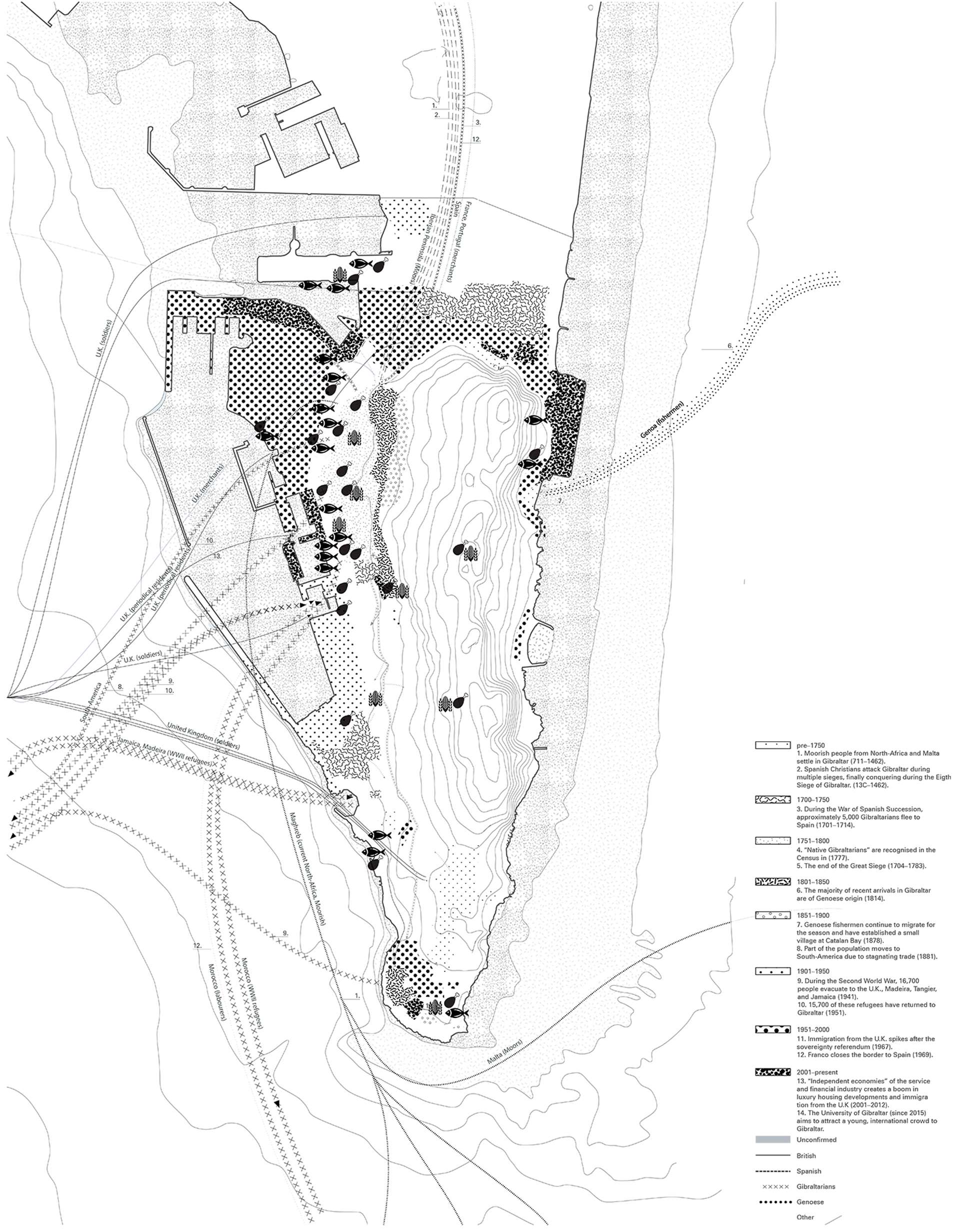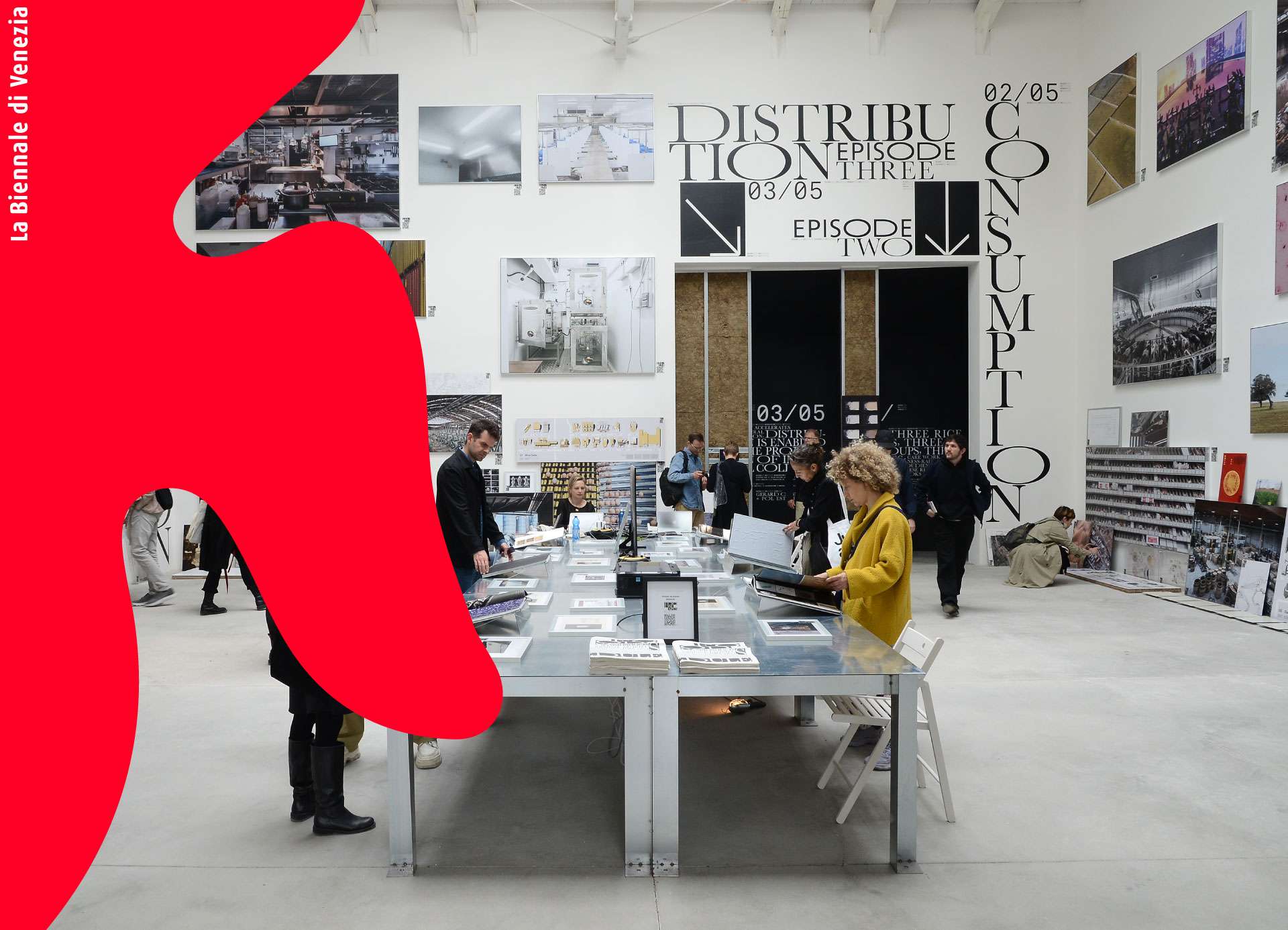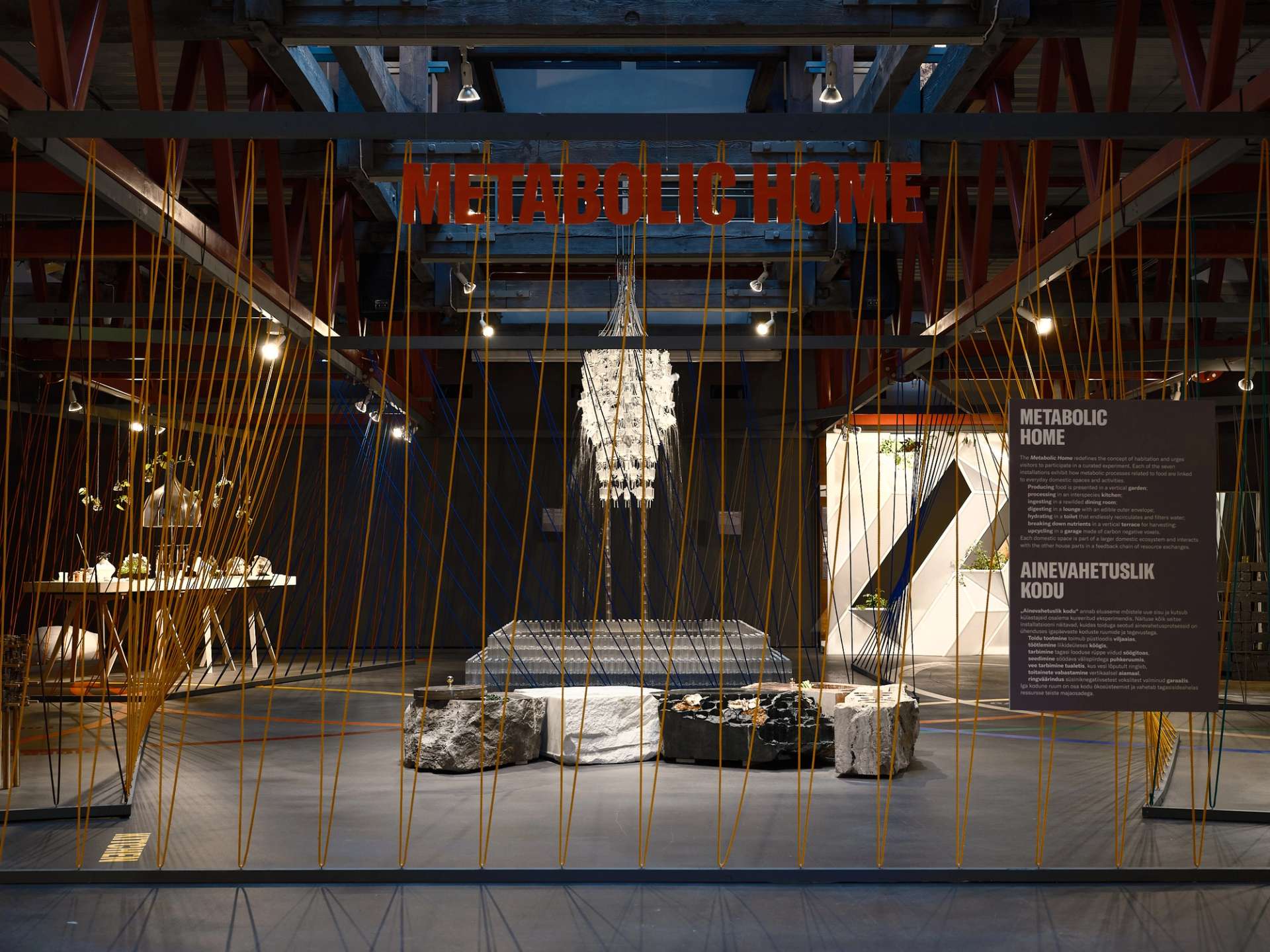Almost by default, Gibraltarian society was a salad bowl of ethnicities and religions that constituted in different percentages its multicultural identity; an amalgam of Spanish, Moorish, Genoese, Portuguese, Jewish and of course British.
In this infertile territory of only 6.8 km², an interesting gastronomic blend derives from both the Northern and Southern coastlines of the Mediterranean Sea, where fish and meat are the main protagonists of the presented recipes. The feeling that the food came from somewhere is inherent, even if the main ingredient, or the cooked recipe as entity, has become synonymous with its adopted home making its initial origin impossible to trace back the history. Gibraltarian cuisine seems to be a national food culture that is capable of absorbing outside influences and reshaping itself. Such a transformation is a sign of the economic and cultural integration of its migrant populations.
“Culinary Cultures” understands this dietary story of Gibraltar, as well as the way in which it incorporates relevant change. A new food culture is developed from production to consumption across the peninsula and over time, gradually alleviating Gibraltar’s culinary life.
This contribution reacts to three discrete contexts maintaining the same operational logic: framing culinary meetings and setting occasions around the peninsula in three different locations, in the city, aside the coast and inthe sea, in order to establish a coherent food culture.
“Culinary Cultures” introduces a change in the familiar setting of the Public Market, highlighting particularities that it already offers, aiming to smoothly imbue the shift in the local culture. Making people aware becomes then a strategy to shrink the current ratio of obesity and overweight residents that affects three out of five Gibraltarians. The purge of the current “effortless” street food culture should be an invitation for participation, resulting in an understanding of what we should consume and how. Gibraltar’s expected population doubles by 2050 and becomes even more diverse in terms of the nationalities living in the territory. As a result, its survival depends on the maintenance of its differences, and even its further differentiation. Incorporating new dietary habits and dining settings of people from northern Africa and East Asia becomes the new challenge.
Within the scenario of the local food production around this infertile land, architecture in relation to food has the chance to alter its current consequential condition. Food and dining should not take place in generic spaces that happen to be there, but in spaces created to host them and enhance a coherent food culture across the territory. The ritual of eating in the project “Beyond the Rock: A Gibraltar in the Making” is an integral part of the coastline and even the sea, materializing in a multilayered scenario from production to consumption.
In a contemporary urbanized society like Gibraltar, cooking provides one chance most people have of taking some control over what they eat. Cooking is not just about what goes on in the kitchen, it is a pivotal point in the food chain— the one that arguably affects everything else in it. Cooking, like talking and writing, requires education— and like these essential skills, it comes easily once you know how.
The project was developed at the Berlage Center for Advanced Studies in Architecture and Urban Design -TU Delft Faculty of Architecture. Advisors: Michiel Riedijk, Salomon Frausto, Hugo Corbett
Bibliography
Steel, Carolyn. Hungry City: How Food Shapes Our Lives. UK: Random House, 2013.
KOOZ What prompted the project?
EP Names of food and recipes are quite often a reliable indicator of the cultural or geographic history of the entity. According to Luke’s Tsai contribution in “You and I eat the same [2018]”, they tell a story, that can obscure, mythologize, or straight-up and fabricate the true origins of the food that is served in a territory. The narratives in food – all the ways a collection of ingredients on a plate – are more than just the sum of nutritive parts, and more than something characterized as “good” or “bad” food. They evoke a feeling that the food came from somewhere, even if the main ingredient, or the cooked recipe as entity, has become synonymous with its adopted home making its initial origin impossible to trace back the history. Culinary Cultures understands the story of the territory through its multicultural food culture and the way in which it incorporates any dietary change.
KOOZ What questions does the project raise and which does it address?
EP Food as commodity or eating as function have a wide range on whether they are considered a bare necessity or a pleasure. The balance in this range still remains a rhetorical issue in many cases. "Culinary Cultures" questions on how food reaches our plates; how one lives in a place that only imports its food and how fresh is defined in this case. Consequently, through this project eating is highlighted as a distinct spacious function that needs to be independent. By establishing a new dietary setting developed from production to consumption across the peninsula and over time, Gibraltar’s culinary life is gradually elevated and gains more control over what is served, where and how. The proposed strategy alters gradually the current condition in a smooth and fluent way, in which all people associated with the territory could get involved and absorb it. It can be characterized as a dynamic project. For example, the act of the Live Kitchen taking place once per year in the Public Market during the festival is an event that through the project is proposed to gradually occur more often in the public space, in order to familiarize the residents and especially the young owns with proper dietary habits, how to become responsible consumers and how their food is produced.
Architects, planners, designers, chefs – all the experts involved in the food chain- should have a critical approach towards any design procedure, embrace and highlight the special characteristics of each place either when creating a space or a recipe.
KOOZ What are for you the greatest shortcomings in our current relationship to how we produce and consume food?
EP The main drawback is the unawareness of the transformation process. Architects, planners, designers, chefs – all the experts involved in the food chain- should have a critical approach towards any design procedure, embrace and highlight the special characteristics of each place either when creating a space or a recipe. According to my point of view, this process of before getting it to table is not under proper consideration in terms of its ecological footprint.
We live in an era of plentiful food at relative little apparent cost at least in the western world, that satisfies our basic needs, while makes them appear inconsequential. This becomes quite clear via Gibraltar’s case. Located between Mediterranean and Atlantic coastlines, its dependency on others for its sustenance counts also in terms of food supplies and demands, since its raw materials are entirely imported. As a result, this food has travelled most of the times thousands of miles through airports and docksides, warehouses and factory kitchens, and been touched by dozens of unseen hands before ending up in restaurants in the city center and in the secluded marinas, the few supermarkets, and the Public Market outside the historic walls.
KOOZ How does the project approach and redefine the relationship between food and architecture?
EP The produced illustrations are based on three distinct locations and by extension on three architectural projects – the market, the farm and the restaurant- and aim to convey the spatial relations of both their exterior settings and their interior spaces. This sequence of spaces is depicted in all three cases in two different occasions, during a common day and during an annual festival. Rather than treating professional kitchens and dining places with high quality service as separate and secluded clusters in the urban fabric, the project maintains a strongly linked relation between production and preparation of food and its consumption, among producers, cookers and consumers. Eating should not be considered as an ephemeral fuel for people, detached from the process of cooking. Cooking is not just about what goes on in the kitchen; it is the pivotal point in the food chain; the one that arguably, affects everything else in it.
KOOZ What case studies and references did you look to?
EP Architectural and non-architectural references are of equal importance, since they feed one another and allow for interpretation. The project represents the overall proposed setting having three main references: a) Atelier’s Bow-Wow drawings –due to their monochromatic style and the dimension of depth through the use of the graphical perspective-, b) the panels of the Great Tapestry of Scotland -where symmetrical axis and distortion of the scale play an important role in the compositions- and c) the six tapestries of ‘The vanity of small differences’ by Grayson Perry – commenting on the modern consumerist culture. As far as the third one is concerned, the focal point is the visual environment people build around themselves, while it is gradually decoded.
Each tapestry contains cultural references and ingenious product placement and highlights not only the social class that his anti-hero is journeying through, but also elements and everyday objects that the viewer can at first glance associate with. The medium of tapestries, although known as a traditional symbol of the rich, becomes an oxymoron to depict a commonplace drama, the one of social mobility.
In terms of content, all three references are the outcome of a profound understanding of the social values, the activities and the communities they outline. Meanwhile, although they construct wholes and frame an overview, their parts can be viewed or exhibited separately. Even in each of the images, the parts or objects are clearly outlined. All three are exhibited in customized ways, although completely different from one another, adding physicality to the constructed scene.
KOOZ With a continuous growth in the worldwide population and an increment in severe food shortages, what is for you the potential of designing for greater synergy between these two realms? How and to what extent can one inform the other into greater sustainability?
EP Changing diets become a reality-based need as a result of the raw material constraints and the great loss of the biodiversity in flora and fauna due to climate change. The end of plenty will have profound consequences in the near future in extremely dependent food chains, such as the case of Gibraltar. Inevitably, this change will also affect how and where we consume food. Moreover, the continuous growth of the worldwide population as well as the waves of migration are issues that need to be taken into account by architects and planners, because they add value to design. Architectural Synthesis can be understood as decoding and reassembling information that already surround us, but still not used in the most efficient way. For example, the synergy observed in the bee community, as well as in an aquaponic system, plays an important role here, because all figures count as co-workers. These two references work as loops of local food production, which might be an answer to greater sustainability and independence.
KOOZ What is for you the power of the Architectural Imaginary in attempting to raise awareness of contemporary issues?
EP Rendering textures to describe the finishes and including incidental objects such as utensils and furniture, the environmental elements of the surroundings and of course the figures set up the behavioral manner the space operates. Architectural drawings become compositions of life summarizing contextual relationships, surfaces and behaviors in a single drawing. The section cut, the height of the viewpoint and the location of the vanishing point vary per scene in order to represent the characteristics of each project, or even each moment they represent. Plans and sections by default are projective drawings. However, the presented drawings depict their subjects as geometric figures, they describe a latent spatiality that includes the position of the observer.
These parameters are transformed respectively according to the setting of each space, from the urban scale to the table one. As a result more people can relate and get easier familiar with the imaginary, even if they try to find the “error” or the extravagant element in the presented image.

Bio
Elli Papachristopoulou is an architect and designer, currently based in Athens, Greece. ”Culinary Cultures” is part of the collective thesis project “Beyond the Rock” within The Berlage. More information about the whole project can be found on vimeo.com/theberlage
Thesis Advisors : Michiel Riedijk, Salomon Frausto, Hugo Corbett.





